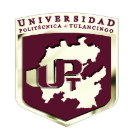Introduction to Tulancingo Polytechnic University
Tulancingo Polytechnic University (Universidad Politécnica de Tulancingo (UPT) in Spanish) is a vibrant and promising institution of higher learning.
I. Overview of the institution
Nature of the institution: This is a non-profit public higher education institution recognized by the Mexican Secretariat of Public Education. Its operating funds mainly come from government grants and it is committed to providing high-quality and reasonably priced higher education services to the general public.
Location: The main campus is located in Tulancingo, Hidalgo, Mexico, with a population of 50,000 - 249,999. The specific address of the school is Calle Ingenierias No, 100 col. Huapalcalco, Tulancingo, 43629 Hidalgo, Mexico. In addition, the school has branches in Tepehuacan, Tenango, Molango and Tlanchinol, expanding its educational coverage and providing learning opportunities for more students.
II. History
The Polytechnic University of Tulancingo was established in 2002 and is a relatively young institution. Although the school was established not long ago, it has always kept pace with the times and continued to grow and develop since its establishment. It has actively explored in teaching, scientific research and social services, and gradually emerged in the field of higher education in Mexico, cultivating many professional talents for the local and surrounding areas.
III. School Strength
Discipline and Major: The school offers a wide range of disciplines, covering arts and humanities, business and social sciences, science and technology, engineering and other aspects, and awards undergraduate, master's and doctoral degrees. For example, in the field of engineering, there are majors such as agricultural engineering, biomedical engineering, and chemical engineering; in the field of business and social sciences, there are majors such as accounting/finance, business/commerce/management, and economics, providing students with a wealth of professional choices to meet the interests and career development needs of different students.
Faculty: Although the number of teachers and detailed qualification information are not clear in the public information, as a public institution, its teaching team has professional qualities and teaching ability. They have rich knowledge reserves and teaching experience in their respective subject areas and can provide students with high-quality teaching and guidance.
Teaching resources: The school has modern teaching facilities, such as professional laboratories and multimedia classrooms, which provide strong support for practical teaching and theoretical teaching. At the same time, the school library has a rich collection of books. In addition to covering educational materials in various scientific fields, it also collects a large number of classical and contemporary literary works, creating a good academic atmosphere for students.
IV. Educational philosophy
Although the school has not clearly disclosed its specific educational philosophy, it can be inferred from its professional settings and training goals that Tulancingo Polytechnic University focuses on cultivating students' practical ability and technical skills, emphasizing the combination of theory and practical application. We are committed to cultivating professional and technical talents that meet the needs of the industry for the society. We not only focus on the learning of students' professional knowledge, but also focus on cultivating students' innovative thinking, teamwork ability and ability to solve practical problems, so as to help students enter the workplace smoothly after graduation and contribute to social development.
V. Key laboratories and disciplines
Key laboratories: At present, the relevant information of the school's key laboratories has not been clarified in the public information, but given the school's professional settings in the fields of engineering, science and technology, it can be inferred that the school may have laboratories in related fields to support teaching and scientific research and provide students with a platform for practice and scientific research.
Advantageous disciplines: The engineering field is the school's advantageous discipline direction. Taking the agricultural engineering major as an example, this major trains students to master engineering and technical problems in agricultural production, including the design and application of agricultural machinery, the construction and management of agricultural facilities, etc., so that students can use engineering and technical means to promote the modernization of agriculture. The industrial engineering major focuses on cultivating students' abilities in production system planning, design, implementation and management, cultivating professional talents for industrial enterprises, and improving enterprise production efficiency and competitiveness. These majors may invest more resources in curriculum setting, faculty allocation, etc. to ensure teaching quality and students' professional literacy training.
Six, Department Settings
The school has not made clear the specific department settings. However, combined with its subject areas, it is speculated that there may be an Engineering Department, which is responsible for the teaching and research of various engineering majors; a Science and Technology Department, which carries out teaching activities in science-related disciplines; a Business and Social Sciences Department, which undertakes the educational tasks of business and social science majors; and a Department of Arts and Humanities, which conducts teaching in the fields of arts and humanities. Each department integrates resources to promote exchanges and cooperation between disciplines and provide students with a comprehensive education.
Seven, School Rankings
In the world university rankings, the ranking of Tulancingo Polytechnic University in different institutions is as follows: In the 2024 ranking of 4icu.org, it ranks 9562nd in the world and 135th in Mexico. Overall, the school is relatively low in the international ranking, but it has a certain influence in the higher education system in Mexico, and with the continuous development of the school, its ranking is expected to gradually improve.
Eight, Cost Situation
Tuition: Whether it is local or international students, the tuition information for undergraduate and graduate students has not been clearly announced. However, considering its nature as a public university, the tuition fees may be at a relatively reasonable and affordable level compared to private institutions. At the same time, the school's official website may provide relevant information about scholarships, grants and other funding programs to help students reduce their financial burden.
Other expenses: In addition to tuition fees, students also need to consider accommodation, transportation, learning materials, food and personal expenses. Accommodation costs vary depending on the type and location of accommodation; transportation costs depend on the student's travel method and frequency; learning material costs vary depending on the major, such as engineering majors may need to purchase experimental equipment, professional books, etc.; food and personal expenses vary from person to person.
IX. Campus environment
Campus location: The school has a suburban campus. This geographical location allows students to focus on learning in a relatively quiet environment, and is close to large cities, making it convenient for students to quickly reach the city through public transportation and access rich cultural, business and internship resources. At the same time, since all campus activities are held on campus, it is conducive to forming a close-knit student community and enhancing communication and interaction between students.
Campus facilities: The school attaches importance to the all-round development of students and is equipped with complete campus facilities. The library provides students with a wealth of learning resources to help students complete their academic tasks and cultivate reading habits. In terms of sports, the school has facilities such as stadiums and sports clubs, and organizes various sports activities to encourage students to actively participate in sports, maintain good physical fitness, and promote healthy physical and mental development.
-
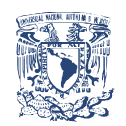
National Autonomous University of Mexico
-
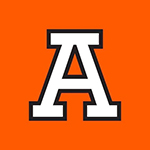
Anahuac University of North Mexico
-

Universidad Autonoma de Guadalajara
-
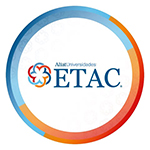
Universidad ETAC
-
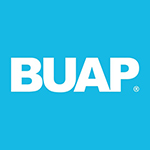
Meritorious Autonomous University of Puebla
-
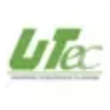
Technological University of Tulancingo
-
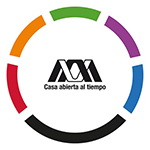
Metropolitan Autonomous University
-
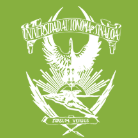
Autonomous University of Sinaloa
-
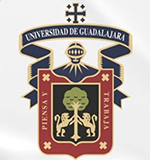
University of Guadalajara
-

Technological University of Huejotzingo
-

Mesoamerican University
-

Istmo University
-

Mariano Galvez University of Guatemala
-

Regional University of Guatemala
-

Galileo University
-

Francisco Marroquín University
-

Rafael Landívar University
-

University of the Valley of Guatemala
-

University of San Carlos of Guatemala
-

Technological Institute of Tlaxcala Plateau
-

Golfo University
-

Technological University of South Sonora
-

Technological University of Huejotzingo
-

Tizimín Institute of Technology
-

Chilpancingo Institute of Technology

